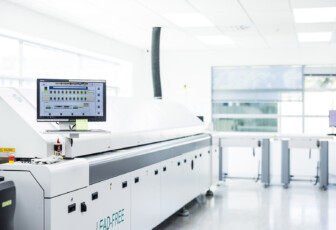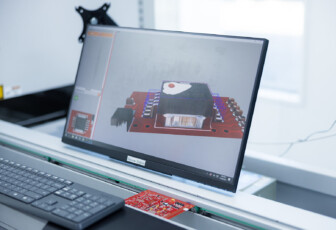
4. Capability and equipment: not all contract manufacturers can build your product
This is a big one. It’s easy to assume your product is “standard” — until your contract manufacturer can’t build it properly. Start by asking what capabilities they offer and what types of builds they support.
A key thing to consider is whether the contract manufacturer offers Design for Manufacture (DFM) as part of their service. Getting input from your contract manufacturer during the design phase can improve manufacturability, reduce the risk of rework, and help you move faster. The earlier you bring them in, the better your chances of getting it right the first time.
Next, if you need a complete build done — from printed circuit board assembly (PCBA) through to final mechanical assembly, confirm whether the contract manufacturer can deliver this. Not all contract manufacturers do both in-house. If yours doesn’t, you may end up coordinating multiple suppliers and introducing unnecessary risk and cost.
Once you’ve established capability, dig into the equipment and processes. Do they have the right machinery to build your product efficiently and to spec? Ask them to explain how they approach different types of assembly, and whether their line is set up for the size, complexity, and volume you need.
Key areas to explore include:
- Surface Mount (SMD) pick and place: What are the file requirements? Do they need centroid data, placement maps, or other details from your design team?
- Solder paste application: Do they use traditional stencils, or have they invested in stencil-free printing (e.g. solder paste jet printers)? The latter offers greater flexibility, especially for prototyping or frequent changes.
- Through-Hole (PTH) assembly: Is your board hand-soldered, wave soldered, or run through a selective solder machine? Each has pros and cons depending on your design, and the right method can improve consistency and reduce costs.
- Conformal coating: If your product needs environmental protection, can they apply conformal coating in-house? What coating methods and materials do they use?
- Component traceability: Can they tell you exactly where each component came from — including manufacturer, distributor, and country of origin? This is especially important in regulated or safety-critical industries.
- Quality inspection equipment: Ask whether they use Automated Optical Inspection (AOI) or X-ray to inspect complex solder joints or multi-layer PCBs. These tools are essential for identifying faults that can’t be seen visually.





